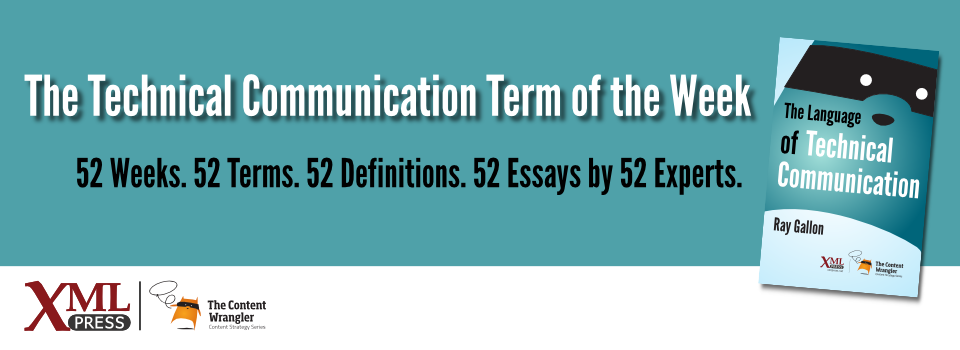Content Strategy Terms for Technical Communicators
When Ann Rockley wrote her seminal work, Managing Enterprise Content: A Unified Content Strategy, in 2001, it seemed obvious to many of us in technical communication that we had been doing some or all of that work for years. Likewise, when it came time to make a list of terms for this publication, the overlap with content strategy was so great that we could have reused most of The Language of Content Strategy.
We did reuse a small set of key terms, but many terms we did not reuse are fundamental to both disciplines. Here are some terms from The Language of Content Strategy along with some additional terms.
Content that is designed to adapt to the needs of the customer, not just cosmetically, but also in substance and in capability. Adaptive content automatically responds to the screen size and orientation of any device, but goes further by displaying relevant content that takes full advantage of the capabilities of the device being used.
The application of engineering discipline to the design, acquisition, management, delivery, and use of content and the technologies deployed to support the full content lifecycle.
The process that defines the series of changes in the life of any piece of content, including reproduction, from creation onward.
The analysis and planning to develop a repeatable system that governs the management of content throughout the entire content lifecycle.
A three-dimensional illustration where parts of the exterior are removed to reveal interior features.
A formal method for solving problems that focuses on solutions rather than problems. Traditional problem-solving techniques focus on defining all of the parameters of a problem, then looking for a solution. Design thinking iteratively investigates possible solutions, looking for alternate paths to solve the problem.
A methodology for specifying, designing, and deploying the digital documents needed to automate business processes and web services.
Part of the Dublin Core Metadata Initiative, Dublin Core refers to a set of terms used to describe both digital resources (files, videos, images, web pages, audio, etc.) and physical resources (maps, paintings, sculptures, books, compact discs, etc.).
eLearning refers to courses or training delivered using electronic media, most often the Internet.
A search technique that allows users to narrow their search by applying filters on multiple, predefined axes. For example, a faceted recipe search might allow searchers to filter recipes based on considerations such as diet (vegan, gluten-free, etc.), main ingredient, cooking time, and level of skill.
A curve that represents the loss of memory retention over time. First hypothesized by Hermann Ebbinghaus in 1885, the forgetting curve considers the strength of an initial memory and the amount of time that has passed to estimate what percentage of that memory will be retained. Ebbinghaus’s experiments showed that retention drops off rapidly over time unless the memory is reinforced.
The art and science of structuring information (knowledge) to support findability and usability.
A process by which content—online, in print, or in software—is made world ready so it may be localized with minimal rewriting, redesigning, or reengineering.
A software-based process that translates content from one language to another.
A sub-class of eLearning that is delivered on mobile devices.
A form of structured content that is designed, created, and delivered as discrete components within the content whole.
A field of computer science that marries artificial intelligence and computational linguistics to enable computers to understand the spoken word. It’s related to natural language generation: the process of generating the spoken word from a computer.
An characteristic of memory that images are more likely to be remembered than words. Infographics take advantage of this effect, using images to help readers retain more information.
A printing technology that allows a single deliverable, typically a book, to be printed when needed. With Print on Demand (POD) technology, a publisher does not need to print and store hundreds or even thousands of copies of a book.
A technique, often used in user interfaces, that displays only the information a user needs at a given moment, revealing additional information as needed. This technique is designed to simplify user interfaces for users.
A set of guidelines and standards covering areas such as vocabulary, editing, tone, and voice. May extend to structural aspects of content.
A hierarchical classification scheme made up of categories and subcategories of information plus a controlled vocabulary of terms, usually used to describe a specific area of knowledge.
Conversion of content from one language to another.
A repository that contains translated source and destination language pairs.
A method for passing information between parts of a system using a link, rather than copying the information. In technical communication, use-by-reference usually refers to transclusion, where links are used to include content from one source into another.
An interface that guides a user through a sequence of decisions and forms, helping him or her complete a particular task.
Extensible Markup Language (XML) is an open standard for structured information storage and exchange.
